Storytelling has always been a powerful tool for communication, creativity, and connection. With the advent of artificial intelligence (AI), the art of storytelling is evolving rapidly. AI tools are transforming how stories are created, told, and shared, offering new possibilities for writers, marketers, and content creators. In this comprehensive guide, we’ll delve into the top 10 AI tools for storytelling in 2024, highlighting their features, benefits, and how they can elevate your storytelling endeavors.
Introduction to AI in Storytelling
The fusion of artificial intelligence (AI) with storytelling is reshaping the narrative landscape. AI tools utilize advanced algorithms to assist in creating, editing, and enhancing stories. From generating ideas to crafting entire narratives, AI is becoming an indispensable tool for storytellers across various industries. As AI technology continues to advance, it offers new ways to explore creativity, making storytelling more accessible and innovative.
The Importance of AI in Modern Storytelling
AI tools are revolutionizing storytelling by making it more efficient, personalized, and engaging. They help storytellers overcome writer’s block, generate fresh ideas, and provide new perspectives on narrative structures. For marketers, AI can analyze audience data to create tailored stories that resonate with specific demographics. In education, AI-driven storytelling tools can create interactive and immersive learning experiences. The integration of AI in storytelling is not just about automation; it’s about enhancing human creativity and expanding the boundaries of narrative possibilities.
Key Features to Look for in AI Storytelling Tools
When selecting AI storytelling tools, consider the following features:
- Idea Generation: Tools that can brainstorm and suggest unique story ideas.
- Content Creation: Ability to generate text, dialogue, and narrative structures.
- Editing and Proofreading: Automated grammar and style checks.
- Customization: Options to personalize tone, style, and voice.
- User Interface: An intuitive interface that simplifies the storytelling process.
- Integration: Compatibility with other writing and publishing platforms.
- Support and Resources: Access to tutorials, customer support, and community forums.
Tool 1: ChatGPT by OpenAI
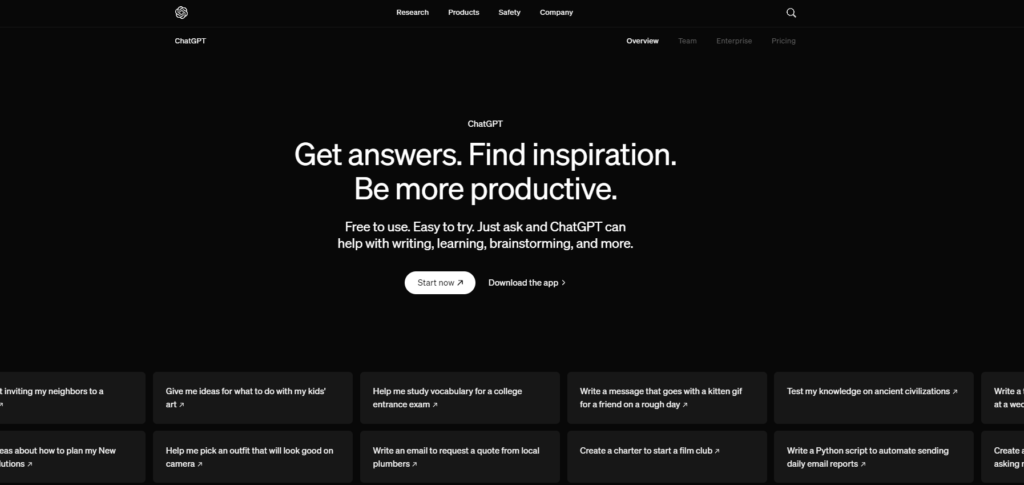
Overview of ChatGPT
ChatGPT, developed by OpenAI, is a versatile AI language model known for its ability to generate human-like text. It’s widely used for various applications, including storytelling, content creation, and interactive dialogues.
AI Features in ChatGPT
ChatGPT excels in:
- Natural Language Generation: Produces coherent and contextually relevant text.
- Dialogue Creation: Generates realistic conversations for characters.
- Idea Brainstorming: Assists in generating plot ideas and story arcs.
Pros and Cons of ChatGPT
Pros:
- Highly versatile and adaptable to different storytelling needs.
- Generates high-quality, natural-sounding text.
- Regular updates and improvements from OpenAI.
Cons:
- Requires a subscription for full access.
- May produce generic content without specific guidance.
Tool 2: Jasper AI
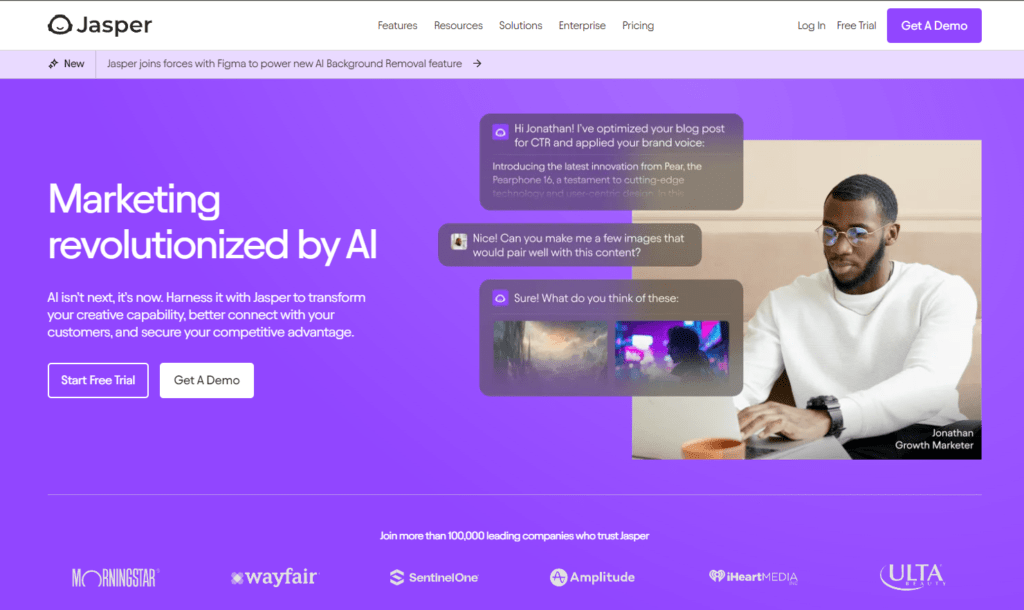
Overview of Jasper AI
Jasper AI, formerly known as Jarvis, is an AI content creation tool designed to assist writers with generating high-quality content quickly. It’s popular among bloggers, marketers, and storytellers.
AI Capabilities of Jasper AI
Jasper AI offers:
- Content Generation: Produces blog posts, articles, and stories.
- Storytelling Frameworks: Provides templates for various story genres.
- SEO Optimization: Generates content optimized for search engines.
Pros and Cons of Jasper AI
Pros:
- User-friendly interface with customizable templates.
- Suitable for a wide range of content types.
- Regularly updated with new features.
Cons:
- Subscription-based pricing.
- May require some manual editing for best results.
Tool 3: ShortlyAI
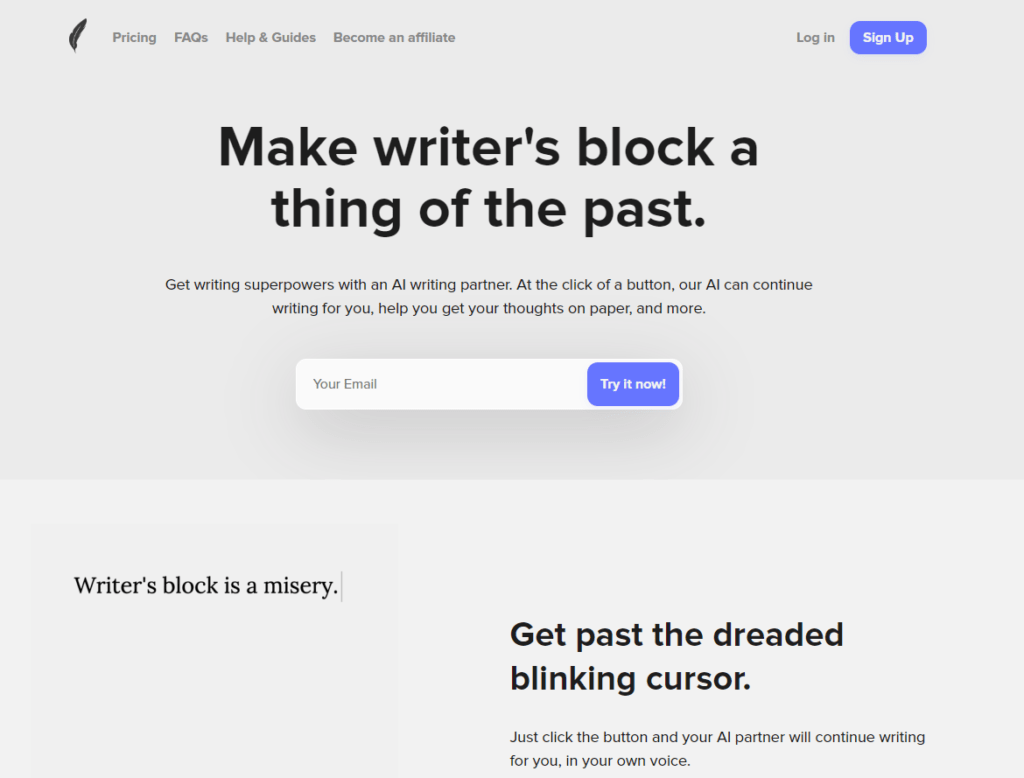
Overview of ShortlyAI
ShortlyAI is an AI writing assistant that focuses on helping writers overcome writer’s block and generate creative content effortlessly. It’s ideal for novelists, screenwriters, and bloggers.
How ShortlyAI Enhances Storytelling
ShortlyAI provides:
- Prompt-Based Writing: Generates content based on user prompts.
- Continuity: Maintains coherence and flow in long-form narratives.
- Editing Tools: Offers tools for refining and polishing text.
Pros and Cons of ShortlyAI
Pros:
- Simplifies the writing process with prompt-based generation.
- Maintains narrative continuity effectively.
- Easy to use with a clean interface.
Cons:
- Limited customization options.
- Subscription required for full access.
Tool 4: Writesonic
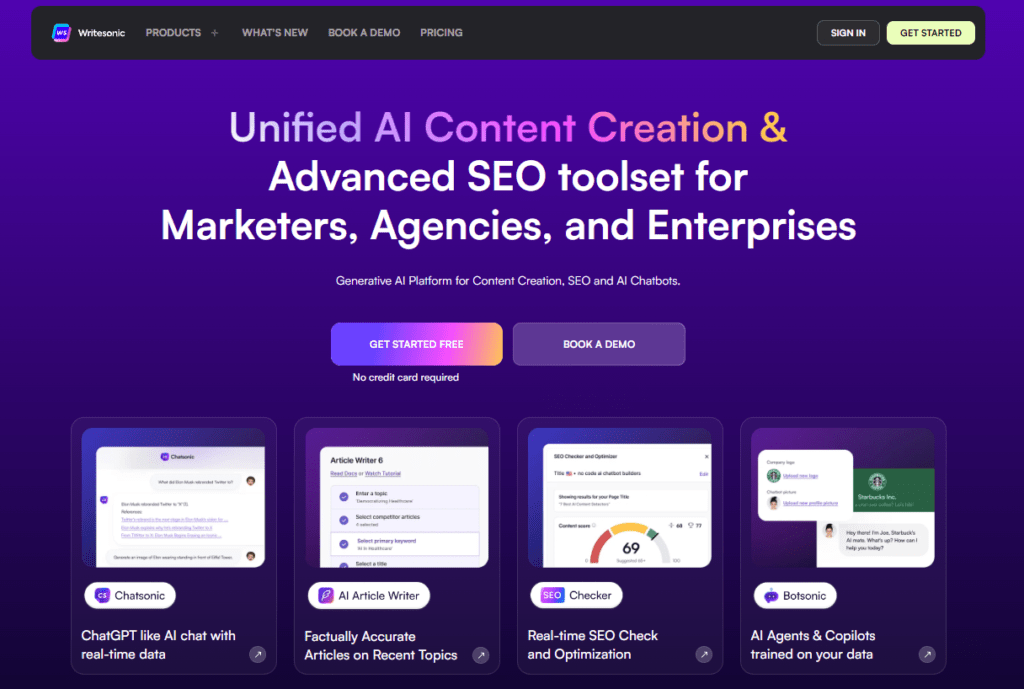
Overview of Writesonic
Writesonic is an AI-powered writing tool designed to generate high-quality content for various purposes, including storytelling, marketing, and copywriting.
AI Features of Writesonic
Writesonic excels in:
- Content Generation: Produces stories, articles, and marketing copy.
- Idea Generation: Offers creative prompts and story ideas.
- Customization: Allows users to specify tone and style.
Pros and Cons of Writesonic
Pros:
- Versatile tool for various writing needs.
- User-friendly interface with customizable options.
- Affordable pricing plans.
Cons:
- May require manual refinement for best quality.
- Subscription required for premium features.
Tool 5: Rytr
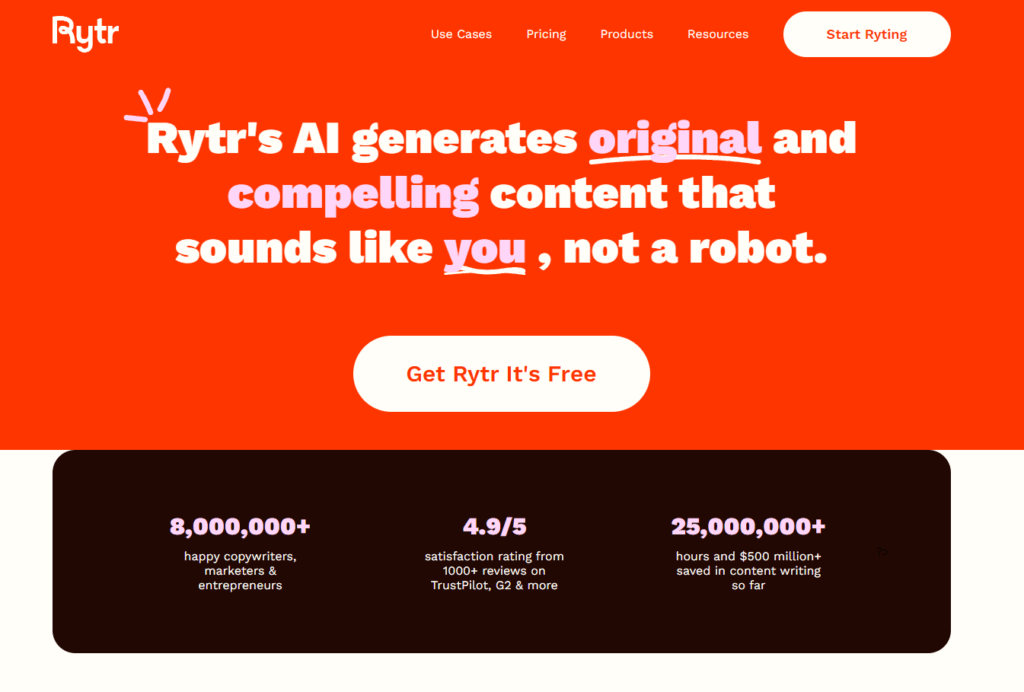
Overview of Rytr
Rytr is an AI writing assistant that helps users create content quickly and efficiently. It’s designed for a wide range of writing tasks, from storytelling to marketing copy.
AI Capabilities of Rytr
Rytr offers:
- Content Creation: Generates stories, articles, and emails.
- Style Customization: Allows users to choose different writing styles.
- Editing and Proofreading: Provides grammar and style suggestions.
Pros and Cons of Rytr
Pros:
- Easy to use with a straightforward interface.
- Affordable pricing with various plans.
- Suitable for multiple writing purposes.
Cons:
- Limited advanced features.
- May produce generic content without specific guidance.
Tool 6: Copy.ai
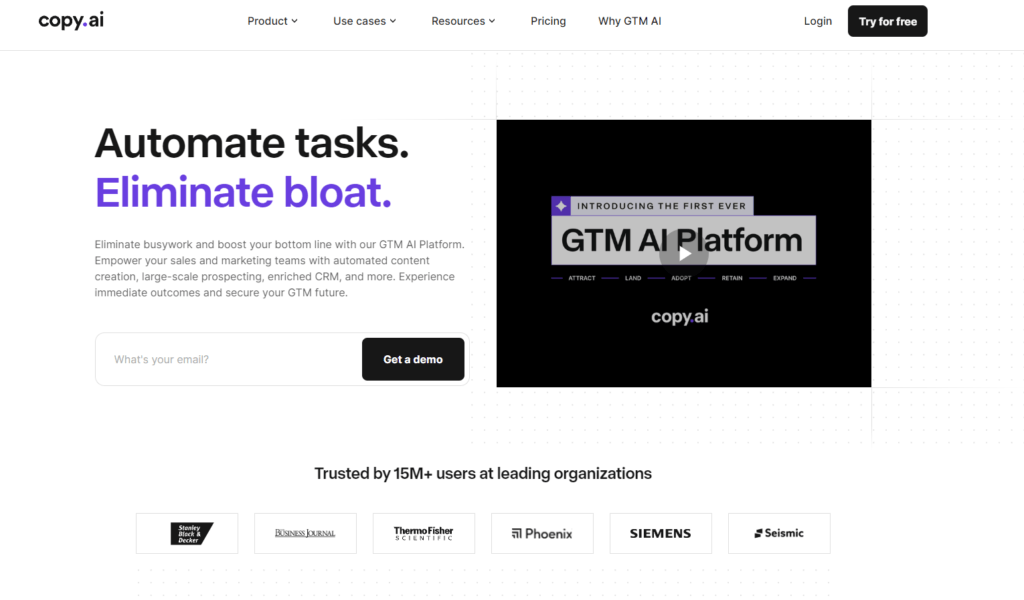
Overview of Copy.ai
Copy.ai is an AI writing tool that focuses on generating marketing content, social media posts, and storytelling elements. It’s known for its ease of use and quick content generation.
AI in Copy.ai
Copy.ai excels in:
- Content Generation: Produces marketing copy, stories, and social media content.
- Idea Brainstorming: Offers creative prompts and story ideas.
- Customization: Allows users to tailor content to their needs.
Pros and Cons of Copy.ai
Pros:
- Fast and efficient content generation.
- User-friendly with a variety of templates.
- Suitable for marketers and storytellers.
Cons:
- Subscription required for full access.
- Limited advanced customization options.
Tool 7: StoryLab.ai
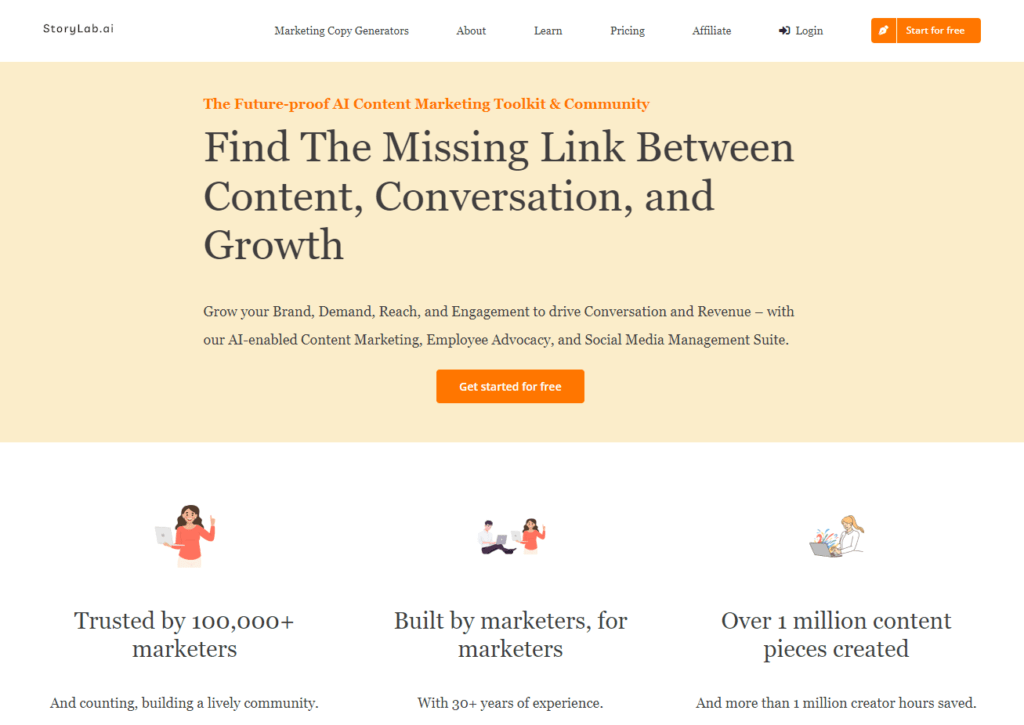
Overview of StoryLab.ai
StoryLab.ai is designed specifically for storytellers, offering AI-driven tools to generate, develop, and enhance story ideas. It’s ideal for novelists, screenwriters, and content creators.
AI Features of StoryLab.ai
StoryLab.ai provides:
- Story Generation: Creates plot ideas and storylines.
- Character Development: Assists in developing characters and dialogues.
- Plot Structuring: Helps organize and structure stories.
Pros and Cons of StoryLab.ai
Pros:
- Tailored specifically for storytelling.
- Offers a variety of creative tools.
- Suitable for both novice and experienced writers.
Cons:
- May require manual refinement.
- Subscription required for full functionality.
Tool 8: Narrato
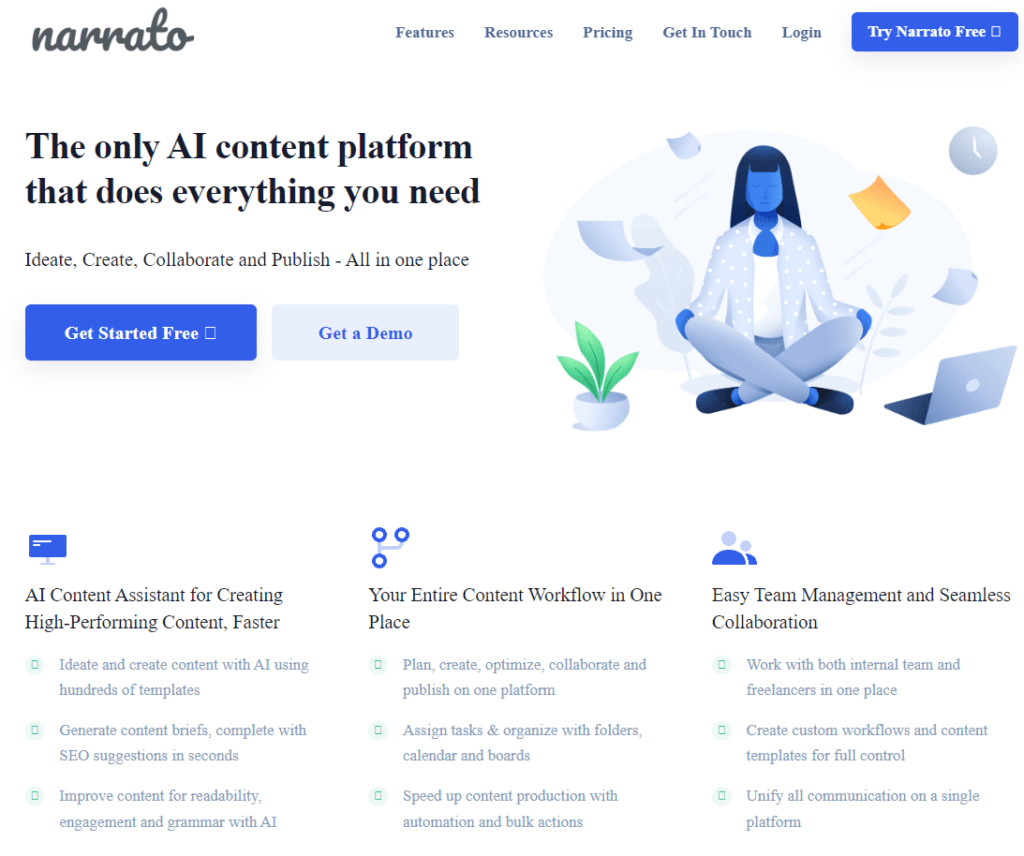
Overview of Narrato
Narrato is an AI content creation platform that focuses on generating high-quality written content, including stories, articles, and marketing copy.
AI Capabilities of Narrato
Narrato offers:
- Content Creation: Produces stories, blogs, and articles.
- Editing and Proofreading: Provides grammar and style suggestions.
- Customization: Allows users to specify tone and style.
Pros and Cons of Narrato
Pros:
- Comprehensive content creation tools.
- User-friendly interface.
- Suitable for multiple writing purposes.
Cons:
- Subscription required for premium features.
- Limited advanced storytelling tools.
Tool 9: Plotagon
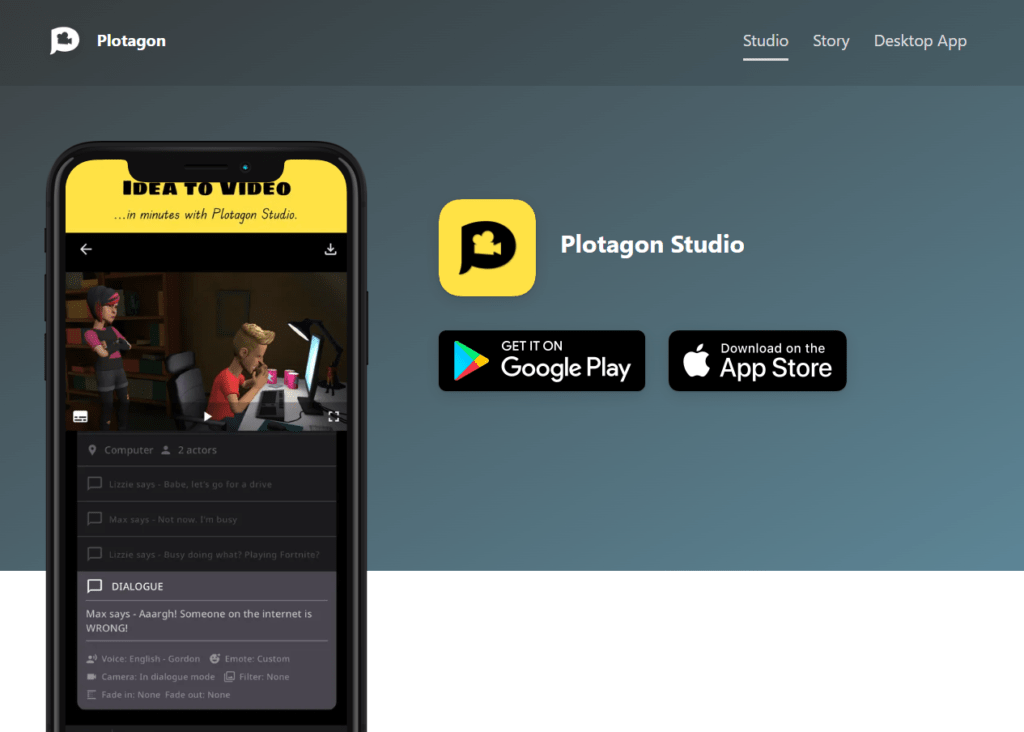
Overview of Plotagon
Plotagon is an AI-powered animation tool that allows users to create animated stories with ease. It’s ideal for storytellers looking to add a visual element to their narratives.
AI Tools in Plotagon
Plotagon provides:
- Character Animation: Creates animated characters and scenes.
- Storyboarding: Assists in visualizing and structuring stories.
- Voiceovers: Includes options for adding voiceovers to animations.
Pros and Cons of Plotagon
Pros:
- Adds a visual dimension to storytelling.
- User-friendly with drag-and-drop functionality.
- Suitable for educational and marketing purposes.
Cons:
- Limited to animated storytelling.
- Subscription required for full access.
Tool 10: ScripAI

Overview of ScripAI
ScripAI is an AI-powered tool designed to assist screenwriters and storytellers in creating scripts and story outlines. It offers advanced features for developing detailed narratives.
AI Features of ScripAI
ScripAI provides:
- Script Generation: Creates scripts and dialogues.
- Plot Development: Assists in developing storylines and plots.
- Character Creation: Helps develop characters and their arcs.
Pros and Cons of ScripAI
Pros:
- Tailored for screenwriters and storytellers.
- Advanced features for detailed script development.
- Suitable for both novices and professionals.
Cons:
- May require manual refinement for best quality.
- Subscription required for full functionality.
How to Choose the Right AI Storytelling Tool
Choosing the right AI storytelling tool depends on your specific needs and preferences. Consider the following factors:
- Purpose: Identify what type of storytelling you need the tool for (e.g., novels, scripts, marketing).
- Features: Ensure the tool offers the features you need, such as content generation, editing, or animation.
- Ease of Use: Look for a tool with an intuitive interface that matches your skill level.
- Budget: Consider the cost and whether the tool fits within your budget.
- Support: Check if the tool offers adequate customer support and resources.
Future Trends in AI Storytelling
The future of AI in storytelling looks promising, with several trends emerging:
- Increased Personalization: AI will enable more personalized and tailored storytelling experiences.
- Enhanced Creativity: AI tools will continue to evolve, offering more creative and innovative features.
- Integration with Other Technologies: AI will integrate with virtual reality (VR) and augmented reality (AR) to create immersive storytelling experiences.
- Real-Time Collaboration: AI will facilitate real-time collaboration between writers, editors, and creators.
- Improved Accessibility: AI tools will become more accessible, making storytelling more inclusive.
Conclusion
AI tools for storytelling are transforming the way stories are created and shared. These tools offer powerful features that enhance creativity, efficiency, and engagement. Whether you’re a professional writer or a novice storyteller, AI tools can help you bring your stories to life in new and exciting ways. As AI technology continues to advance, the possibilities for storytelling are limitless, promising a bright future for creative expression.
FAQs
What are AI tools for storytelling?
AI tools for storytelling use artificial intelligence to assist in creating, editing, and enhancing narratives, making the storytelling process more efficient and creative.
How do AI tools enhance storytelling?
AI tools enhance storytelling by providing features such as idea generation, automated content creation, and editing, which streamline the creative process and improve the quality of the stories.
Are AI storytelling tools suitable for beginners?
Yes, many AI storytelling tools are designed with user-friendly interfaces and simplified features, making them suitable for beginners.
What are the costs associated with AI storytelling tools?
The costs of AI storytelling tools vary, with some offering free versions and others requiring subscriptions or one-time payments for full access to advanced features.
Can AI tools replace human storytellers?
While AI tools can automate many aspects of storytelling, they cannot fully replace human creativity and intuition. Human storytellers are essential for creating nuanced and emotionally resonant narratives.
Which AI storytelling tool is the best in 2024?
The best AI storytelling tool in 2024 depends on your specific needs and preferences. Tools like ChatGPT, Jasper AI, and ShortlyAI are among the top choices, each offering unique features and benefits.



